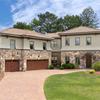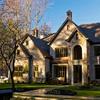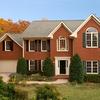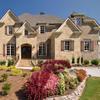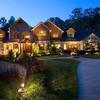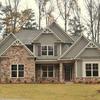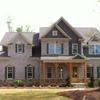Call Us: (404) 419-7573
Neighborhoods
Dunwoody
The wooded suburban setting of Dunwoody offers large lots and a convenient location at the north end of Interstate 285. The area was pioneered in the 1830s and is named for Maj. Charles Dunwoody. The Dunwoody area has top-ranked schools and many elegant homes. Perimeter Mall offers a variety of shopping opportunities and Perimeter Center is home to shopping and office buildings. The Dunwoody Country Club is a private club with an 18-hole golf course and 14 tennis courts. Dunwoody has a 22-acre park that includes an educational center, playground and trails. The area is served by the Dunwoody MARTA station.
Sandy Springs
Sandy Springs is situated on the edge of the Chattahoochee River and conveniently located between the cities of Roswell and Atlanta. Sandy Springs recently incorporated -- becoming the seventh largest city in the state. Fortune 500 companies and major health care providers are located in Sandy Springs, giving the community a strong economic base. The natural beauty of the area can be enjoyed at many parks, including the Chattahoochee River National Recreation Area. Housing options are plentiful, ranging from starter homes to high-end estates. The central business district is undergoing redevelopment with an emphasis on incorporating retail, residential and restaurant space into the cityscape.
Buckhead
Buckhead represents different things to different people. For some it's the sights and sounds of a vibrant community filled with an enticing array of upscale shopping, great restaurants and popular nightspots. For others, it's a sophisticated living environment where some of the Atlanta's most desirable homes are occupied by some of its most famous residents. For others, it's a business community, part of Atlanta's uptown commercial and banking center. Lenox Square and Phipps Plaza are located here, making it a shopping destination for folks from all around. One national magazine placed Buckhead among the Top 10 most affluent communities in the country.
Brookhaven
Brookhaven's meandering streets, rich landscape and historical traditions give it a real sense of community. The Creek Indians occupied the land at one time and the first white settlers arrived in the 1830s. It was in 1910 that land was acquired to build a golf club to be called Brookhaven. The club was completed, but it became known as the Capital City Country Club. Today the golf club is the centerpiece of Brookhaven. There is a mix of housing styles in Brookhaven, from Tudor to Georgian. The area was placed on the National Register of Historical Places in the 1980s. Great schools and easy access to all of Atlanta make Brookhaven a true haven for Atlanta living.
Smyrna
Smyrna is known as the "jonquil city" and indeed it is beginning to grow into full bloom. The city is just north of Atlanta and is near the intersection of I-75 and I-285. A community redevelopment project known as The Village Green earned an Urban Land Institute award for its revitalization of downtown. It includes a library, community center, fountain, government offices, shopping and mixed-used development. Atlanta Magazine voted Smyrna one of the Top 10 places to live in the Atlanta area. With a population estimated at 50,000, Smyrna is attracting new home construction ranging in price from $300,000 to more than $1 million. The city offers plenty of opportunities for outdoor activity with parks, pools, tennis courts and public golfing. Smyrna has a thriving business community and its largest employer is IBM. Smyrna earns its title as the jonquil city from the burst of color that erupts every spring in gardens and along streets as the flowers bloom.
Vinings
Vinings sits at the northwest corner of Atlanta, just across the Chattahoochee River. That location puts Vinings close to the city, but far enough removed to preserve its own identity. The city owes much of its look and feel to Atlanta developer Felix Cochran, who in the 1960s created a town center, known as Vinings Jubilee. Here you'll find shopping and dining in a Victorian setting that includes period streetlamps and a big clock tower. Housing construction is active in Vinings, from condominiums to luxury homes, but prices have remained reasonable, given Vinings location a littler farther out from Atlanta proper. Cumberland Mall offers great shopping, and new restaurants are moving in. In 2007, the Cobb Energy Center for the Performing Arts is scheduled to open and will be a site for concerts, Broadway plays and other live performances.
Midtown
Midtown could easily be called arts town. It's the hub of Atlanta's cultural life. The High Museum of Art is here, as are the Woodruff Arts Center, the Atlanta Symphony Orchestra, the Fox Theater and many other arts and entertainment venues. Anchoring the area is Piedmont Park, a huge green expanse that hosts annual arts and musical festivals. Residents can choose from high-rise condominiums to bungalows located on tree-lined streets. The recent completion of the Seventeenth Street Bridge has reconnected Midtown with the west portion of the city, where an ambitious new residential, commercial, retail development called Atlantic Station is rapidly gaining popularity.
Virginia Highlands
Named for its location at the intersection of Virginia and Highland avenues, this inviting neighborhood has become a destination spot for shoppers and those just looking for an enjoyable day out on the town. Virginia Highland has six distinct commercial villages that are interspersed by bungalow homes. Shopping runs the gamut, from gardening to garments, from woodworking to one-of-a kind art pieces. The Virginia-Highland Historic District is listed on the National Register of Historic Places. Home styles in the neighborhood include Craftsman, Colonial Revival and English Revival Vernacular. Every summer, residents take to the streets to enjoy a huge street festival with music, food and art.
Inman Park
After the Civil War, Inman Park became Atlanta's first planned community. Entrepreneur Joel Hurt believed people should live in a country-like setting convenient to downtown. Thus he created a neighborhood with large lots, curving streets and open space. Hurt even established one of the country's first street car systems that traveled from Inman Park to downtown. As happened in many urban centers around the U.S., Inman Park went into severe decline during the 1950s. Thankfully, foresighted pioneers began restoring and renovating some of the city's most beautiful homes in the '70s. At present, there are more than 300 homes in various stages of restoration. Best of all, there is a huge sense of community spirit - neighbors banded together in the early '70s to defeat a plan to put a freeway through the area - that still thrives today. In April, Inman Park puts on a spring festival and tour of homes that includes parades, and entertainment.
East Atlanta Village
East Atlanta Village is one of those neighborhoods that up until recently had managed to stay under the radar. That's all beginning to change. The Washington Post has written about it. The New York Times describes it as having a "steadily rising wave of cool." East Atlanta Village is about three miles east of downtown, thus offering easy access to work and entertainment. Housing styles range from Craftsman to Victorian, and new construction can be seen throughout the area. Though it's one of Atlanta's hottest real estate markets, East Atlanta still offers some of the city best values. The area has a good variety of shopping, eateries and places to go at night. Brownwood Park is at the heart of the neighborhood and Grant Park is nearby. Every year residents celebrate with the East Atlanta Strut, which includes a parade, live music and food.





